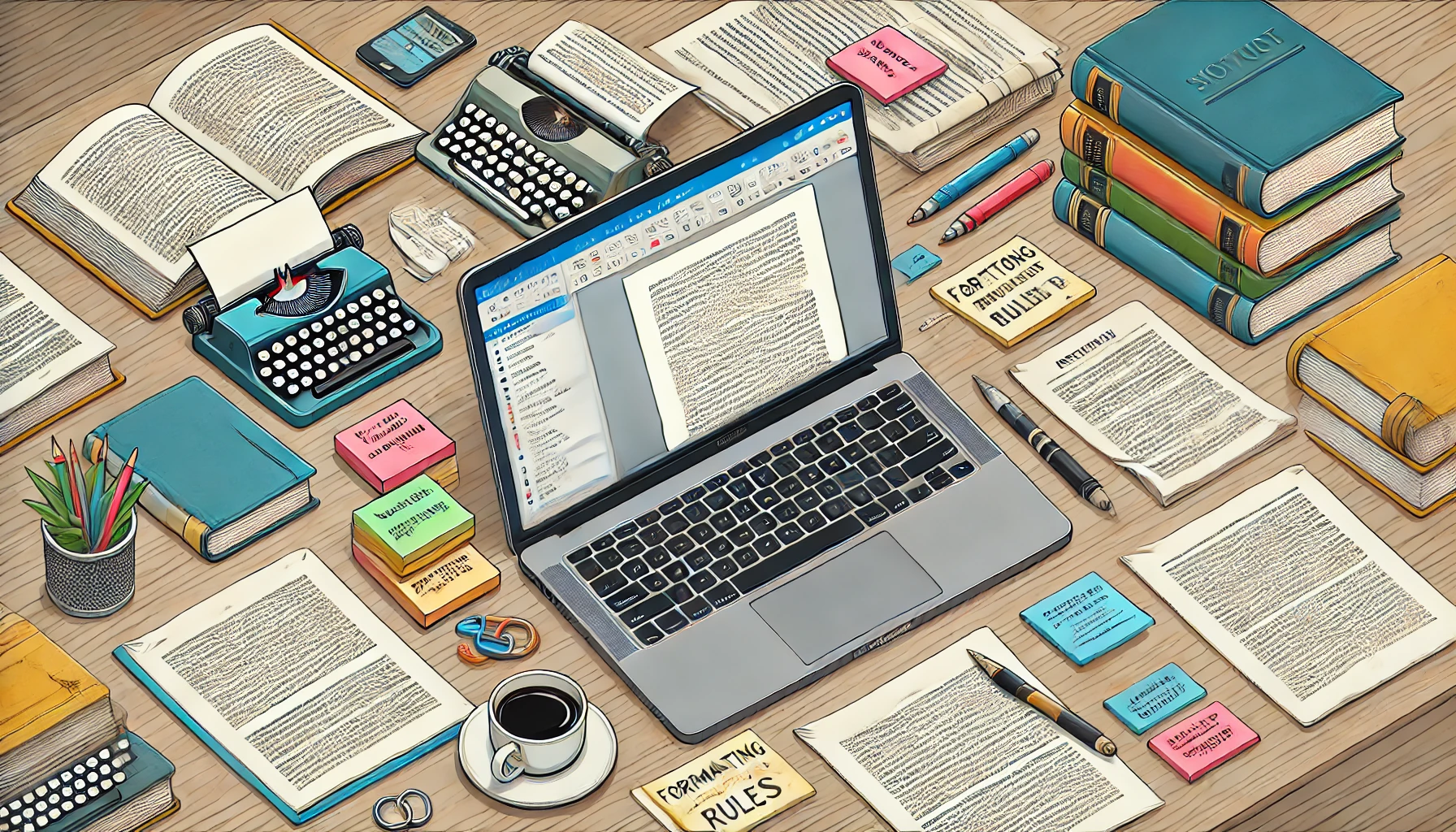
Almost everyone has embraced the online world in today’s digital age, so why should book manuscripts be left behind? Converting your manuscript into an eBook is an exciting step for any author. However, preparing your manuscript for this transition requires careful attention to detail to ensure a smooth and successful conversion process.
This blog post will guide you through the essential steps of formatting, editing, and proofreading your manuscript for eBook conversion. We’ll also highlight common pitfalls to avoid, helping you present your readers with a polished and professional final product.
Proper formatting is crucial for a seamless eBook conversion. Here are six key elements to focus on:
Consistent Styles and Fonts: Use a standard, readable font such as Times New Roman or Arial, size 12pt. Also, always ensure that font styles are consistent for headings, subheadings, body text, and unique text such as quotes, footnotes, etc.
Paragraph and Line Spacing: Set paragraph spacing to single or 1.5 lines for paragraph and line spacing. You can also use indentations for paragraphs instead of tabs and avoid double spacing after periods.
Margins and Page Breaks: Set margins to 1 inch on all sides and use page breaks for new chapters or sections instead of multiple carriage returns.
Heading Hierarchy: You can use Heading 1 for chapter titles, Heading 2 for subheadings, etc. Just maintain a consistent style for headings throughout the manuscript.
Table of Contents: Create a dynamic table of contents that links to each chapter or section. Most eBook formats support clickable TOCs, which enhance navigation.
Images and Graphics: Ensure all images are high-resolution (300 DPI) and optimized for eBook formats. Place images in line with text rather than floating or anchored images.
Editing is crucial to refine your manuscript and enhance its readability and coherence. Here are the main things to consider when editing your manuscript:
Structural Editing: Review your manuscript’s overall structure and flow and ensure the narrative or argument is logically organized and engaging. You should also check for plot, character development, or factual information inconsistencies.
Copyediting: Always focus on grammar, punctuation, and syntax. Look for awkward phrasing and improve sentence clarity and flow. Also, verify the accuracy of facts, dates, and references.
Stylistic Editing: Your writing style should be consistent and appropriate for your target audience, and you should eliminate any redundancy and unnecessary jargon.
Formatting Checks: Revisit formatting to ensure consistency after making content edits.

Proofreading is the final step before conversion to catch any remaining errors and ensure a polished final product. Here are some key elements to keep in mind:
Spelling and Grammar: Use spell-check tools and manually review the manuscript for errors that automated tools might miss. Remember to pay attention to homophones such as their/there/they’re and other common errors.
Punctuation: Verify the correct use of punctuation, especially quotation marks, commas, and apostrophes.
Formatting Consistency: Ensure that chapter titles, headings, and subheadings are consistently formatted, and check the consistency of fonts, sizes, and spacing.
Page and Paragraph Layout: Always confirm that all page and section breaks are correctly placed.
As mentioned above, this article will also ensure that you will know the common pitfalls to avoid in the future. Here are some factors to focus on:
Overcomplicated Formatting: Avoid using excessive styles, fonts, and colors. Stick to a clean, simple format that will translate well to various eBook readers.
Ignoring Metadata: Include relevant metadata such as title, author, genre, keywords, and description. Proper metadata improves your eBook’s discoverability.
Skipping the Proofreading Stage: Proofreading is essential even if you have edited thoroughly. Fresh eyes (either your own after a break or a professional proofreader) can catch errors you may have overlooked.
Not Checking the Final Output: Once your manuscript is converted to an eBook format (such as EPUB or MOBI), review the final product on multiple devices to ensure proper formatting and readability.
Failing to Backup Your Work: Always keep multiple backups of your manuscript at different stages of the preparation process. Use cloud storage, external hard drives, and other methods to safeguard your work.
Preparing your manuscript for eBook conversion can be a meticulous process, demanding attention to detail at every stage. However, this process will ensure smooth sailing when the time comes for eBook conversion. Proper formatting, thorough editing, and meticulous proofreading are essential steps that ensure your manuscript is transformed into a polished and professional eBook. By adhering to best practices in formatting, such as using consistent styles and fonts, setting appropriate margins, and creating a dynamic table of contents, you ensure that your manuscript is well-structured and easy to read. Editing and proofreading refine your content, improve sentence flow, and eliminate grammatical errors, providing a high-quality final product.
For a successful conversion, it’s crucial to avoid common pitfalls such as overcomplicated formatting, neglecting metadata, and skipping the proofreading stage. Checking the final output on multiple devices and backing up your work at different stages safeguard against potential issues. Investing time and effort in these preparation stages reflects your commitment to delivering a high-quality reading experience, enhancing your credibility as an author, and increasing reader satisfaction. A well-prepared manuscript is the key to a successful eBook that resonates with your audience and stands out in the digital marketplace.
